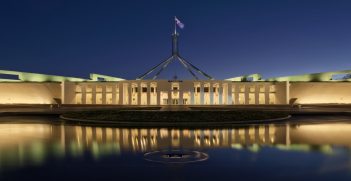Latin America and the Indo-Pacific

Latin Americans have begun to include the idea of an Indo-Pacific region in political parlance. However, they have yet to define their stance on what the concept means and who exactly is part of the Indo-Pacific.
The idea of the Indo-Pacific originated in Asia as part of the region’s search for stability. This explains why Asian governments rapidly adopted the concept, albeit differently defined, once former US president Donald Trump had begun to promote it. One by one, also, European states and the European Union issued their Indo-Pacific strategies, largely supporting the US-promoted Free and Open Indo-Pacific (FOIP). In Latin America, the term is still little used in political and diplomatic circles with no clearly defined strategy or vision of what this imagined region means, as I found in a recently published, co-authored report that surveyed eleven Latin American countries. The Indo-Pacific has been somewhat more visible in news reports mainly about the US and its allies and partners – Australia, India, and Japan – and in academic debates in several countries.
What the Indo-Pacific stands for and who is part of it is contested. While the US and most of its allies and partners tend to highlight democratic principles as a defining feature of the newly coined region, the People’s Republic of China has been warning that such designations will lead to new divisions in the form of a cold war. The Association of Southeast Asian Nations, in contrast, has sought to avoid taking sides in its Indo-Pacific Outlook, emphasising inclusivity instead. Latin America, too, is in a position where siding too closely with one great power will undoubtedly carry negative implications for relations with the other. Maintaining a diplomatic balance between China, the region’s number one trading partner, and the US, which is still the political partner of choice for most Latin American countries, will likely become increasingly difficult. As pressures to choose sides are mounting, as Chile’s president Gabriel Boric recently admitted, it is clear the region would benefit from envisioning its own version of the Indo-Pacific.
Limited use
So far, only two of the eleven countries in Latin America possess an official policy document that mentions the term “Indo-Pacific.” In Colombia, the Ministry of Foreign Relations’ Action Plan 2021–2022 established among its goals to have Latin America included in the Indo-Pacific visions of Australia and New Zealand. It further emphasised the importance for Colombia to foster relations with India to strengthen political and economic ties with the Indo-Pacific. Apart from this, and several statements made by state officials that look at the Indo-Pacific primarily as an economic region, the term has rarely been mentioned.
The second country that has referred to the Indo-Pacific region in an official document is Chile, where the term has also been present in public discourses. Chile’s first ever Defence Policy in 2020, developed under a retired vice admiral serving as undersecretary of defence, identified the Indo-Pacific as one of four relevant security and defence environments. The policy classifies the Indo-Pacific as “vital” for Chile’s development and prosperity, justifying this emphasis by framing the region as a security concern due its potential for conflict. Along the same lines, the Chilean military and the Ministry of Defence have participated in several activities together with the US under the banner of Indo-Pacific cooperation, such as the Indo-Pacific Chiefs of Defence conference in the 2019 “Collaboration for a free and open Indo-Pacific.” In a less US-tilted and more inclusive fashion, officials have also used the term Indo-Pacific in relation to Chile’s international economic relations, highlighting, just like Colombia and others, the role of India.
Apart from these exceptions, the general avoidance of the term Indo-Pacific in Latin American official documents becomes clear when considering encounters with representatives from Japan. While Japanese declarations and press releases refer unequivocally to a free and open, rules-based, and democratic Indo-Pacific or international order, the Latin American versions of these documents use a different language omitting these terms. Brazil is perhaps the most curious case, having omitted the term Indo-Pacific in official policy documents even though it enjoys status as a regional power with its extensive Atlantic coast and strategic ties to India and Lusophone Africa. There has been no mention of the Indo-Pacific in the context of the tripartite grouping IBSA (India, Brazil, and South Africa) or within its joint Multinational Maritime Exercise between the Indian, Brazilian, and South African Navies. Whether this will change as Brazil’s new president, Luiz Inácio Lula da Silva, turns over his predecessor’s religious-infused, anti-globalist foreign policy has to be seen.
The future
Latin America’s non-stance on the Indo-Pacific has served it well so far as countries have avoided trouble with either the US or China or even both. Some might be hesitant to debate the geographical inclusion and meaning of the Indo-Pacific, conceiving that the mere usage of the term means taking sides (particularly with the US). But this is hardly a solution. The failure to take a position on what is an increasingly operationalised regional concept is not only a lost opportunity to proactively shape Latin America’s place in the world, but also to find common ground in a region that for several years has been said to be experiencing a crisis of regionalism. Of course, not all Latin American countries will agree on a single definition. Still, there are two central elements that the majority, if not all, can converge on. Latin American states see merit in maintaining amicable relations with both the US and China, seeking to preserve national and regional autonomy. However they also agree, at least on paper, that their future will crucially depend on socio-economic and political developments in the Indo-Pacific and that closer relations with the region are therefore desirable.
A Latin American vision for the Indo-Pacific would prompt states to rethink regional schemes of integration and cooperation, such as Mercosur (the Southern Common Market of Argentina, Brazil, Paraguay and Uruguay) and the Pacific Alliance, and align these institutions with respect to their external orientations. Latin America’s Pacific Rim countries can rely on existing trans-Pacific channels to find their place in the Indo-Pacific geopolitical landscape. For the Atlantic states, any Indo-Pacific strategy will likely elevate relationships with African states bordering the Indian Ocean. Given the absence of both a Latin American leader capable of promoting a regional vision of the Indo-Pacific and of an Indo-Pacific state advocating for the inclusion of Latin America, it is unlikely that the region will define a common position anytime soon.
Nicole Jenne is associate professor at Pontificia Universidad Católica de Chile, Institute of Political Science, and the director of the Center of Asian Studied at the same university. She holds a PhD from the European University Institute, Florence.
This article is published under a Creative Commons Licence and may be republished with attribution.





